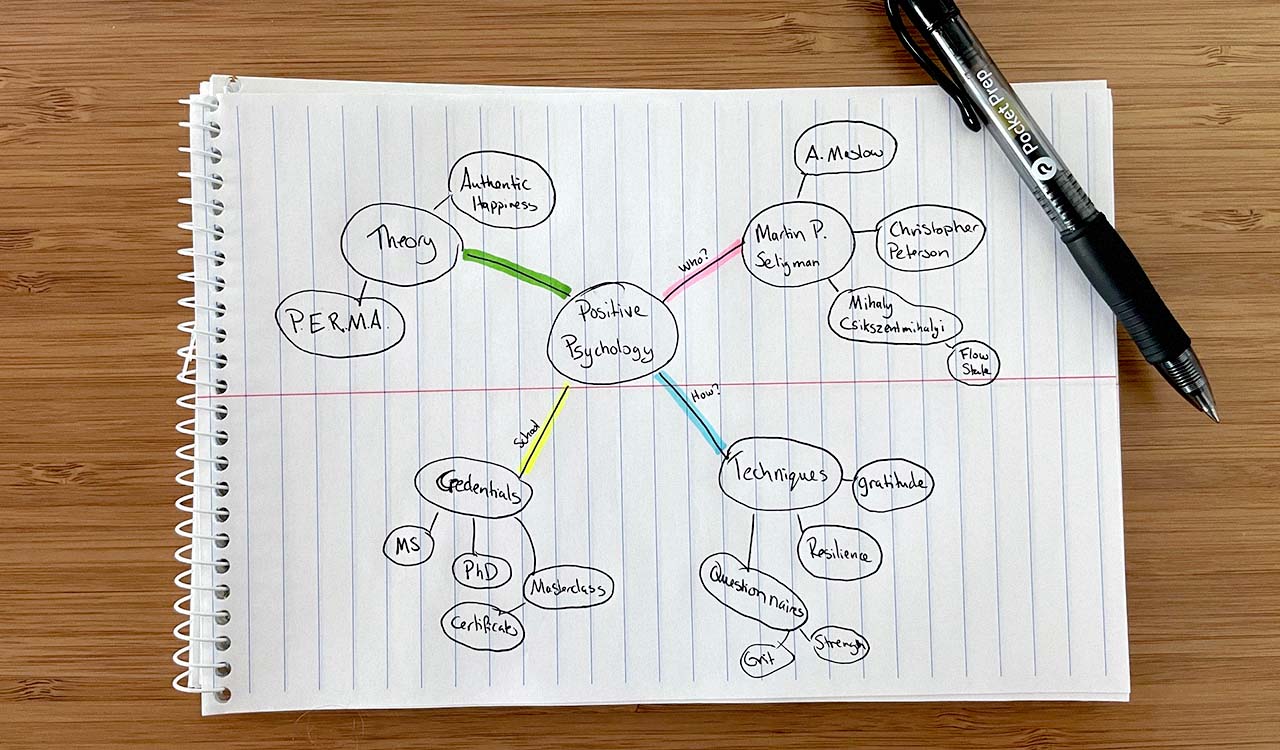Have you ever studied a topic or come up with an idea only to discover that you have pages upon pages of notes but no clear understanding of how it all fits together? This is where the Mind Mapping technique can help.
Mind Mapping might sound like something from the Matrix, but it’s a great way to improve your memory, help you understand the relationship between facts and ideas, and enhance your creative problem-solving.
What is mind mapping?
Mind mapping is a visual tool created by Tony Buzan to help you structure, organize, and learn new information in a highly unique way without worrying about order or format. It was created as an effective method for generating ideas by association, thus, allowing you to organize your thoughts visually to aid in analysis and memory.

It may sound complicated, but Mind Mapping is just a simple diagram with a keyword or phrase in the center, lines linking it to a major idea, and still more lines connecting it to specifics like a sunburst or a spider web-shaped thought bubble.
It can be used as a study method to turn a long list of boring information into a highly organized and memorable diagram that aligns with your brain’s natural way of learning and retaining new data.
The method behind the mind map
Why is Mind Mapping effective? Simply put, Mind Mapping is a great way to get information in and out of your brain through a natural organizational structure. This means that when you’re doing something visually, you’re applying more sensory and visual cues to the brain to help it better remember new information.
The method, in turn, converts a long list of monotonous information that works in line with your brain’s natural way of thinking. Compare it to the usual way of note-taking, which is just transcribing. You’re not thinking about what you’re reading or hearing; thus, you’re not organizing it the way your brain needs to remember the new information.
What can Mind Mapping be used for?
- Taking notes in a lecture
- Showing the relationships between two or more ideas
- Brainstorming for a project or essay
- Reviewing and preparing for an upcoming test or examination
- Memorizing subject notes, books, and materials
How to build a Mind Map
Here’s a quick step-by-step outline to help you build your first Mind Map:
- Take a sheet of paper and place it horizontally.
- Draw a small central circle and write down a word inside that circle that represents the topic you are going to be studying.
- Draw at least four thick lines branching outwards from the central circle.
- Using different colored pens for each line can help you differentiate ideas and better organize your thoughts.
- Jot down keywords and phrases along these lines that represent the central image and the topic you are building a map for
- Draw out more lines that extend from your main lines. The words on these lines are sub-topics from the main lines.
- Continue to expand your Mind Map outwards with more sub-sub-topics and lines.

For a step-by-step understanding of how to draw a Mind Map, check out this visual guide to help you build one out from start to finish.
Does Mind Mapping work?
According to a John Hopkins study, students who regularly use the Mind Mapping method while studying have increased their grades by 12%.
Mind Mapping has also played a role in helping those with dyslexia and autism better understand different concepts and strategies. According to the British Dyslexia Association, “Dyslexics struggle with their spoken and/or written language, following instructions, poor concentration and carrying out analytical or logical tasks. Strategies such as Mind Mapping are recognized as valuable learning tools.”
Give it a try!
Whether you’re preparing for an exam or brainstorming new ideas, Mind Mapping is a great tool to help you remember and improve your current knowledge. So, the next time you’re about to study, follow the handy tips above. Don’t worry about getting it perfect. Just remember to make it easy and fun for you to understand.

 learning science
learning science